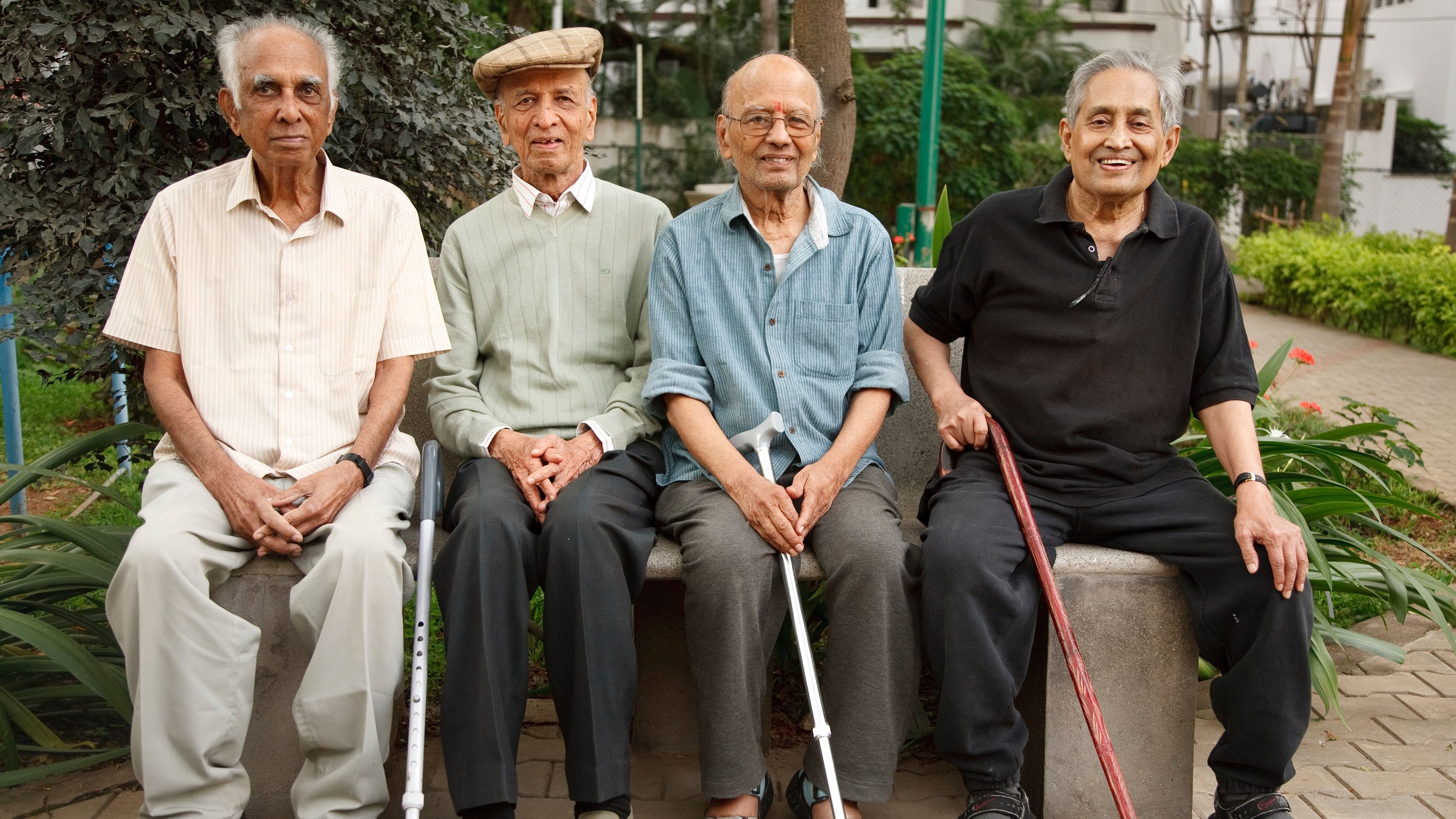
Group of old Indian senior men relax on a park bench in Bangalore,.
Bengaluru: Around 60% of the overall demand for the senior living market in India comes from the non-metro, tier II cities, according to a new report released by property consultancy Colliers on Monday.
As per a report by the United Nations Population Fund, some 17.3 lakh Indians will be categorised as senior citizens (60 years and above) by 2026.
While private developers are mainly catering to the demand for senior living in tier I cities, the report said Ahmedabad, Surat, Coimbatore, Kochi and Panaji are some of the preferred cities in the tier II bracket. The segment is also witnessing a boom in places of pilgrimage such as Vrindavan, Ayodhya, Dwarka and Rameswaram.
“While currently the senior living market size in India is estimated to be about $2-3 billion, it is expected to witness a compound annual growth rate of more than 30% and reach approximately $12 billion by 2030,” said Vimal Nadar, who heads research at Colliers.
Colliers said that factors such as rising life expectancy, nuclearisation of families, higher income levels, increasing importance of a stable post-retirement life and changing lifestyle are driving the demand for senior living in India currently.
With an inventory shortage in the tier II cities, the prevailing ecosystem presents a lucrative opportunity for developers looking to diversify their portfolios, the report said, adding that a significant portion of the supply is concentrated in southern cities, leaving room for growth in other parts of the country.
With close to 20,000 units in the organised sector, current availability of senior housing in India translates into a 1% penetration rate, indicating a huge demand-supply gap, Colliers said.
The proportion of Indians aged over 60 years is likely to increase to 21% by 2050, from about 11% in 2024, per the report. Globally, by 2050, of the 2.1 billion people above 60 years of age, India would account for a 17% share.
It added that with increased focus on health and wellness, seniors today are more active and engaged than previous generations, looking for options that offer amenities such as fitness centres, recreational activities and cultural events to support a vibrant and fulfilling lifestyle.